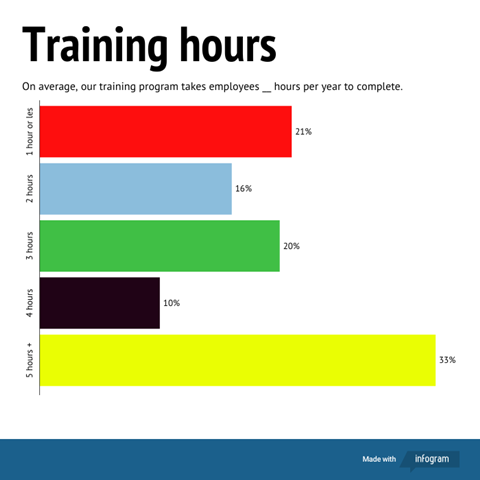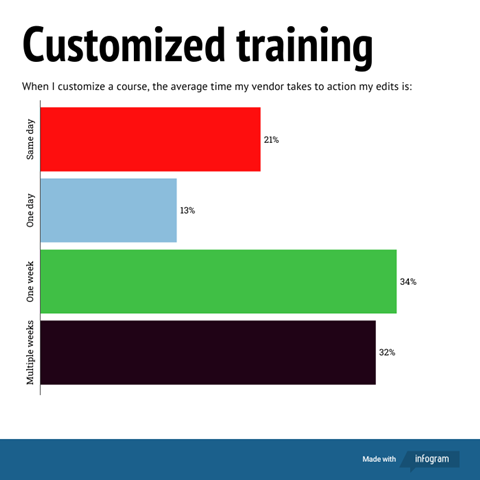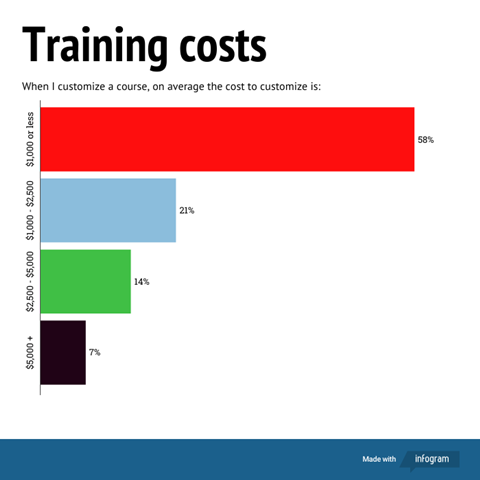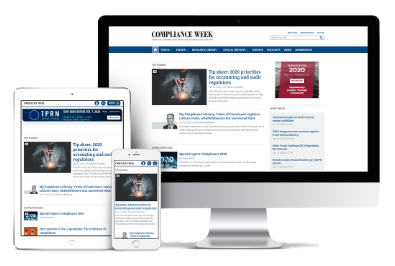Compliance training has become less expensive and more customizable to keep up with the constant rule changes, according to a new survey by microlearning training platform Ethena and Compliance Week.
The survey, “Is Your Compliance Training Program Working for You?” was conducted between December and February and received 134 responses, with 63 percent of respondents working in compliance and risk. The most frequently occurring industry among respondents was financial services (38 percent), the next closest being healthcare (10 percent), education (5 percent), consultancy, government, and technology (each at 4 percent).
Respondents worked mainly at companies with less than 2,500 employees (43 percent), while the second most respondents (18 percent) worked at companies with more than 10,000 employees and fewer than 50,000. There was an almost even split between the approximate annual revenue of the respondent’s companies, with 35 percent working at a company with more than $1 billion in revenue and 31 percent at a company with less than $50 million.

When asked, on average, how many hours the training program for their company takes employees to complete, 33 percent of respondents said five or more hours, while 21 percent said their training took an hour or less.
Training time is a common dilemma for compliance officers. Sectors such as financial services and healthcare require a lot of training and certifications. However, the time required to complete these courses takes employees away from their work, which can frustrate management that relies on their productivity
Roxanne Petraeus, CEO and co-founder of Ethena, was surprised by how many respondents said training took more than five hours.
“That’s a lot of seat time,” she said. “By shifting to role- and risk-based training, companies could cut down on overall training time and be much more efficient and targeted. We’ve seen customers save 40 percent of employees’ seat time while making compliance programs more defensible and aligned with DOJ guidance.”
For compliance training, 81 percent of respondents said they do live training (in-person or virtual) to supplement e-learning. Most respondents, 59 percent, said the training is accessible on mobile.
“In 2025, that’s a miss,” Petraeus said about the number of respondents that have mobile access for their training. “Employees should be able to complete training on the go, whether they’re on a work trip or just making dinner.”
Of the respondents, 46 percent felt pressured to reduce employee training time, she says. Even though Petraeus doesn’t think every employee would do training on their mobile phones, there at least should be phone access, which she says has been crucial for Ethena.

When needing to customize a course, most respondents said their vendor would take a week (34 percent) or multiple weeks (32 percent) to take action on their edits. Only 13 percent said it could be done on the same day or within a day (13 percent).
Petraeus says she was struck by how long a vendor can take to make changes to a course.
“In this moment, with so many changes at the federal level, we’re seeing customers really want an agile platform that allows same-day edits if possible,” Petraeus said.
To help with customization and make it faster, Petraeus says using AI is making a significant difference in the time it takes to customize a course.
“We’re seeing AI dramatically improve language translation speeds, turning around custom content same-day,” she said. “AI is also helping companies create highly customized training quickly and cost-effectively–whether that means dubbing videos or making content look and feel like a specific office.”
Susan Divers, a consultant for Ethena, says major training vendors may not provide the kind of customization to make training more efficient as not all employees need the same kind of training.”
“They want these standard courses that whether you’re a billion-dollar company or a $2,000-a-year startup, they want to give you the same product,” she said. “Training shouldn’t be one-size-fits-all. It should be tailored and really easy to use.”

While the majority of respondents (58 percent) said that the average cost to customize a course was less than $1,000 and 21 percent said the costs range between $1,000 and $2,500, Divers says there shouldn’t be any cost for customization.
“Ethena has a course customization tool where you go in and customize it as quickly as a day–it’s like editing a Word document,” she said.
Respondents generally believed that the training program reduced HR and E&C issues while also being well aligned with DOJ guidance.
Training is routinely updated, according to respondents, with 56 percent saying they update their code of conduct training every year while 26 percent said every two years.
Lessons about prior compliance incidents were included in training among 74 percent of the respondents.
When asked how long it would take to field questions from regulators or the board asking for a training audit, 42 percent of respondents said it would take them a few days, while 22 percent said they would need about a week.
As compliance training evolves, companies increasingly seek more efficient, accessible, and customizable solutions. Helping satisfy those wants will be AI and a focus on adaptive learning to help reduce unnecessary training time while maintaining, and even improving its effectiveness.









